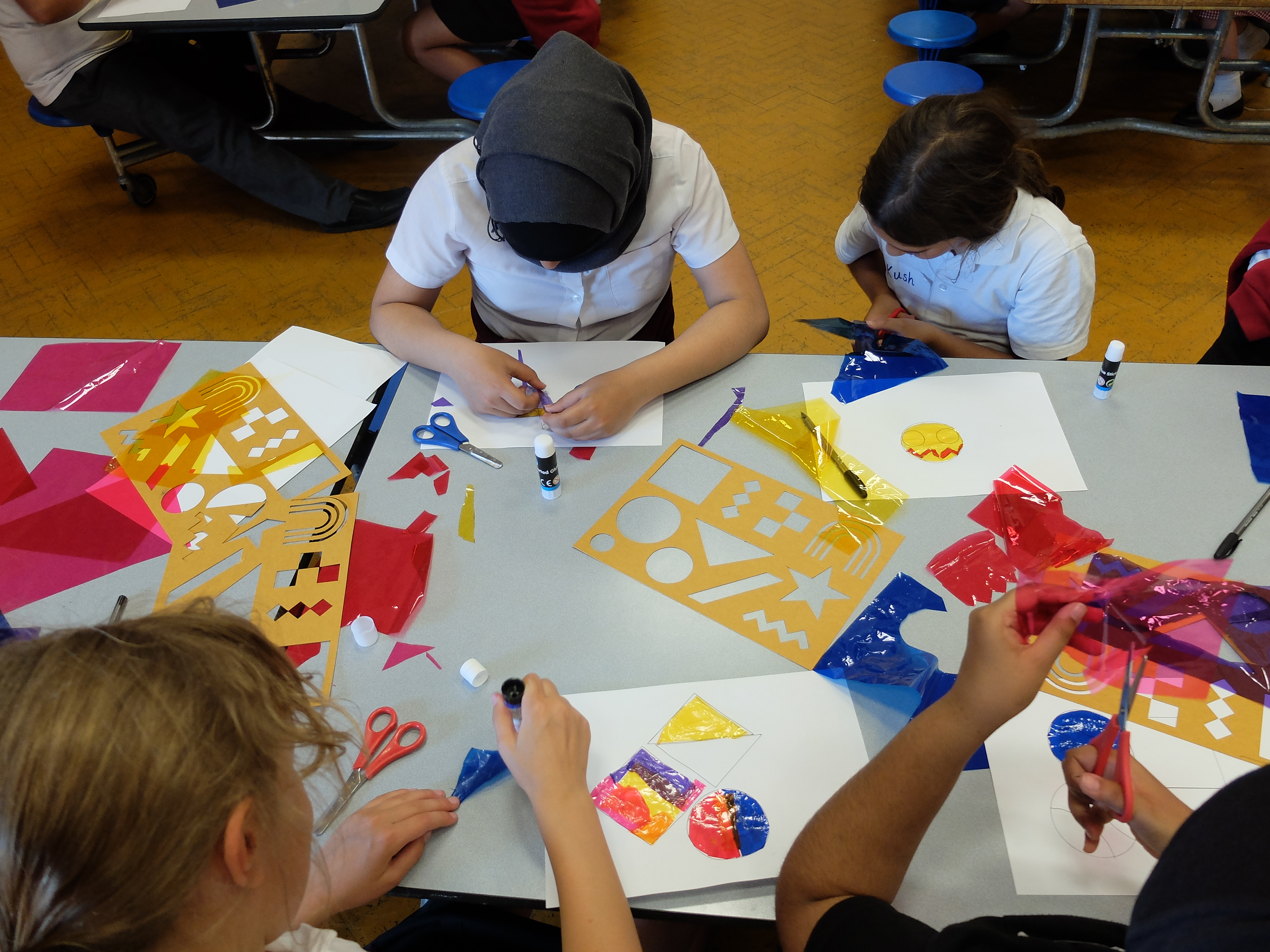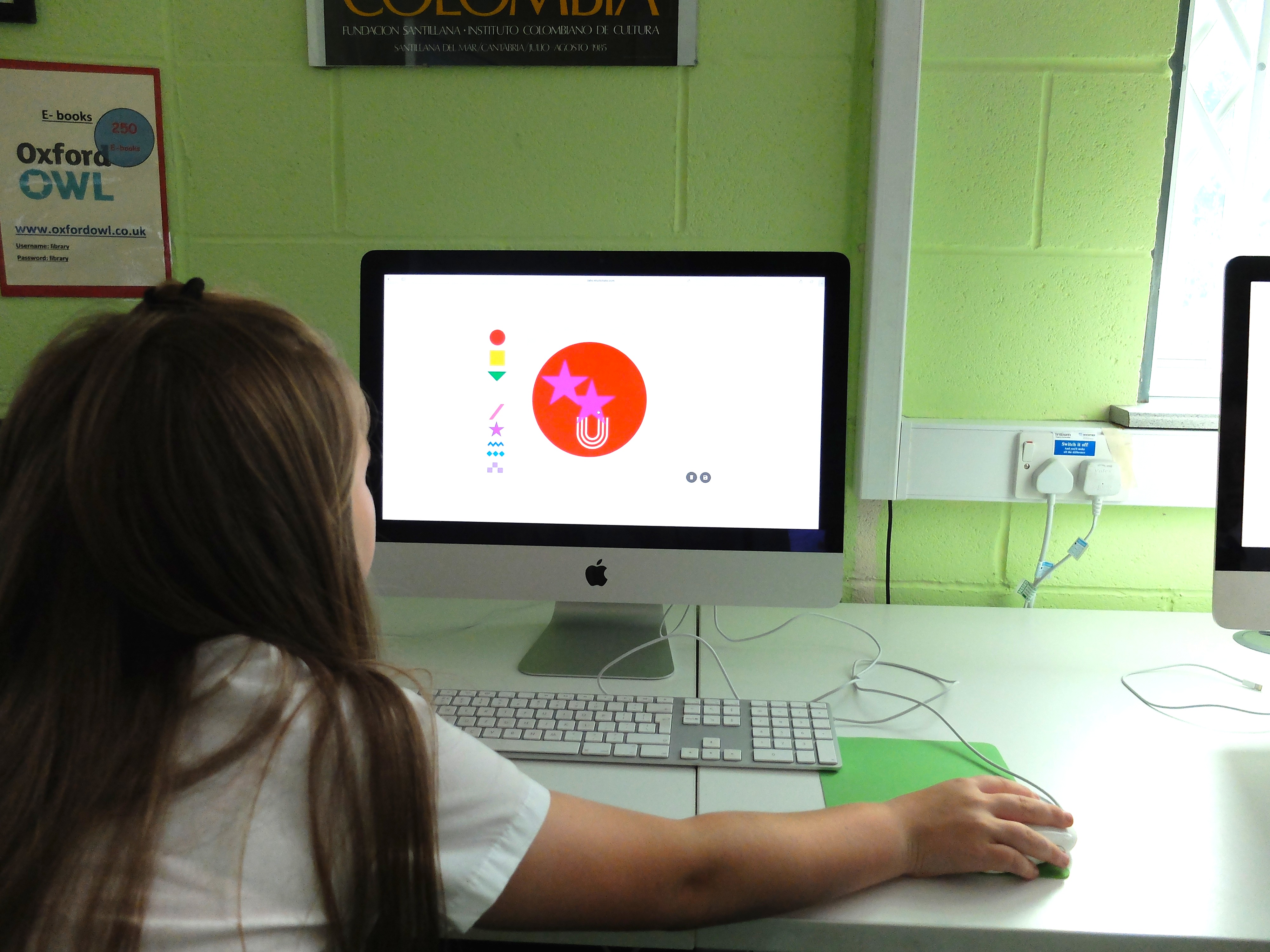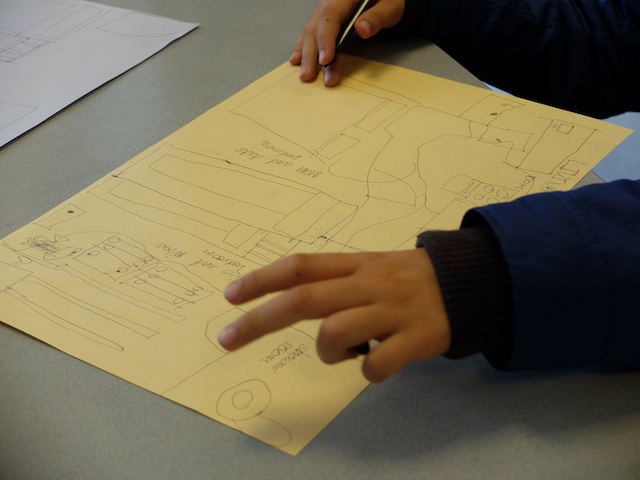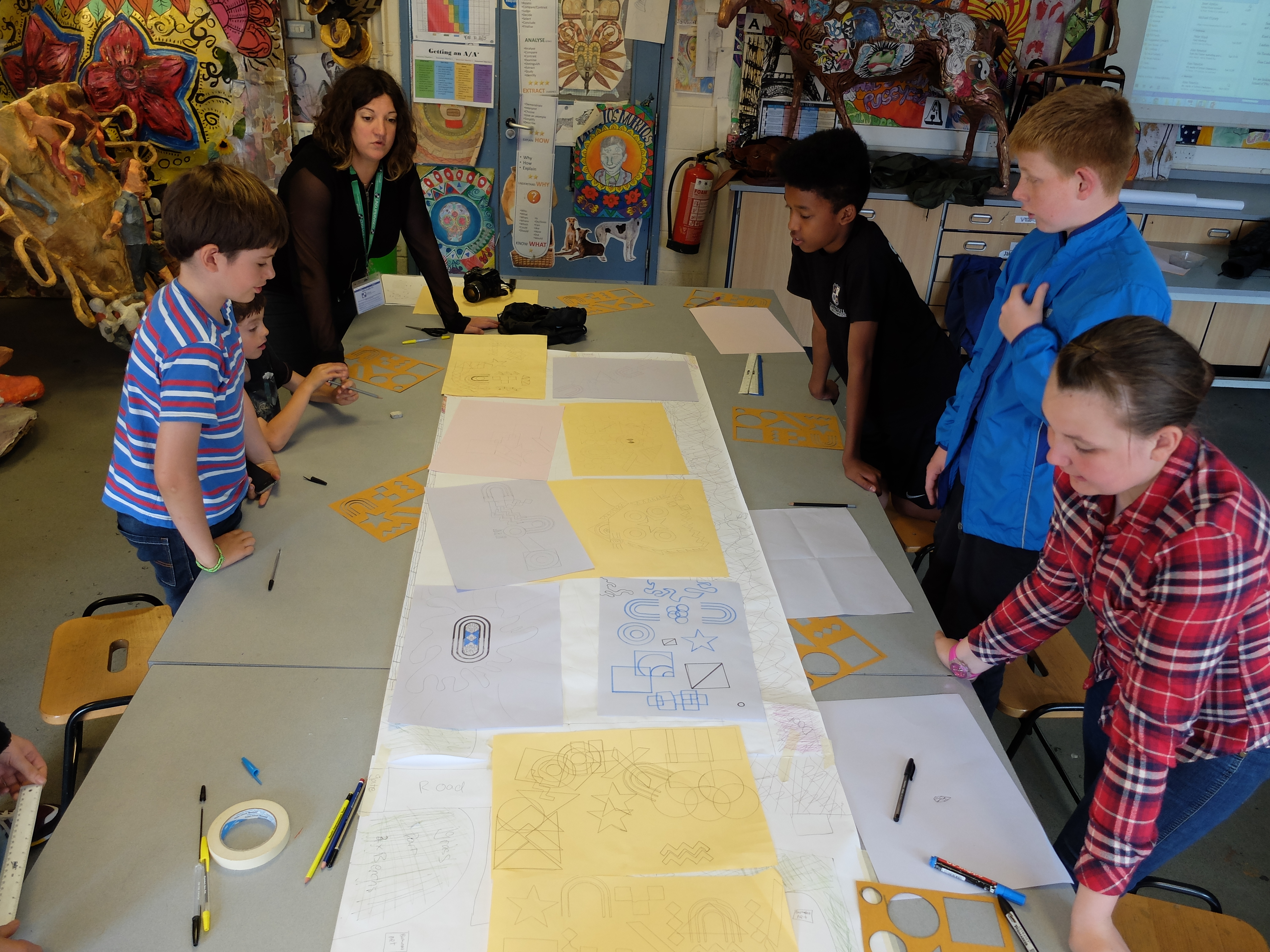The Making of... Dazzle Island
Posted on 18 August 2015 by Liverpool Biennial
What if you returned to school after the summer holidays to find an artwork in your playground? For pupils of Childwall Sports & Science Academy, the new school year will begin with the launch of Dazzle Island, a new permanent artwork made by and for the children to use and enjoy. Together with designers Studio Hato, we have been working with over 100 students from Childwall Sports & Science Academy, Greenbank Primary and Childwall Valley Primary, to create the piece. Take a look with us at how this dazzling artwork, which takes its inspiration from Sir Peter Blake’s dazzle ferry, is coming together.
Step 1: Free Form Shapes
Starting with a series of workshops, the first step was to discover all about dazzle camouflage and Sir Peter Blake's design using the digital dazzle resource. After being introduced to a variety of art movements and techniques, we began to experiment with ideas of form and composition. Using a combination of organic and geometric shapes, the children, alongside Studio Hato, tested different methods of collage to create their own dazzle design.
Step 2: Stencil Tests

We then went on to develop these ideas of shape and arrangement through stencil testing. Making patterns using stencil sets, colour pencils and different types of paper, we worked on enriching our designs with colour overlay and texture.
Step 3: Digital Symbols

Next, using a bespoke digital tool, we composed symbols relating to different rules and activities associated with a school playground. The tool, which has been developed further with the pupils, was initially made as part of the Edgeware Road Project by Studio Hato and Liverpool Biennial's education curator Polly Brannan. Allowing children to create their own coded games and signs, the ideas produced during this stage, were then drawn upon for the final design of the playground.
After the completion of these sessions came the Summer School of Play. The children were invited into the school during the summer holidays to finalise the design for our new collaborative artwork.
Step 4: Mapping Space

For the first activity of the
Summer School, we focused on mapping and exploring how the children navigate the playground. Understanding how the pupils utilise the and recognising the paths and areas they move through changed how the the children chose to approach their design. Each member of the group was encouraged to draw a creative floor plan of their bedroom, and then their house. The exercise opened up discussion about how we all move and circulates through space according to our activities, desires and needs.
Step 5: Collaborative Design

We then moved into the playground to take a survey and draw up a plan of the space, thinking about what lines are created in order to get to a final destination. Based on the results of our previous mapping activity, and the data the children collected in their survey, we began the final design process. Individually, the children first began to overlay dazzle inspired shapes, creating forms and patterns that followed the current activity of the playground. Then, as a group, the pupils drew out aspects they liked from each individual design to formulate a new collaborative drawing.
Step 6: Testing on Playground

Then came the most exciting part - where the children gained an exciting opportunity to visualise their design to scale. Drawing out the shapes and formations with spray paint chalk, we created colourful marks across the playground in order to visually test out the final design.
7. The Final Design

This is the fantastic finalised design made by Studio Hato, informed by the knowledge and ideas produced by the pupils over the course of the workshops. Now under production, we can't wait to see it realised! Are you ready for the first week back in school?
Dazzle Island had been made as part of a unique partnership with Curious Mind's Specialist Leaders in Cultural Education (SLiCE) fellowship programme.
Liverpool Biennial
55 New Bird Street
Liverpool L1 0BW
- T +44 (0)151 709 7444
- info@biennial.com
Liverpool Biennial is funded by
Founding Supporter
James Moores

